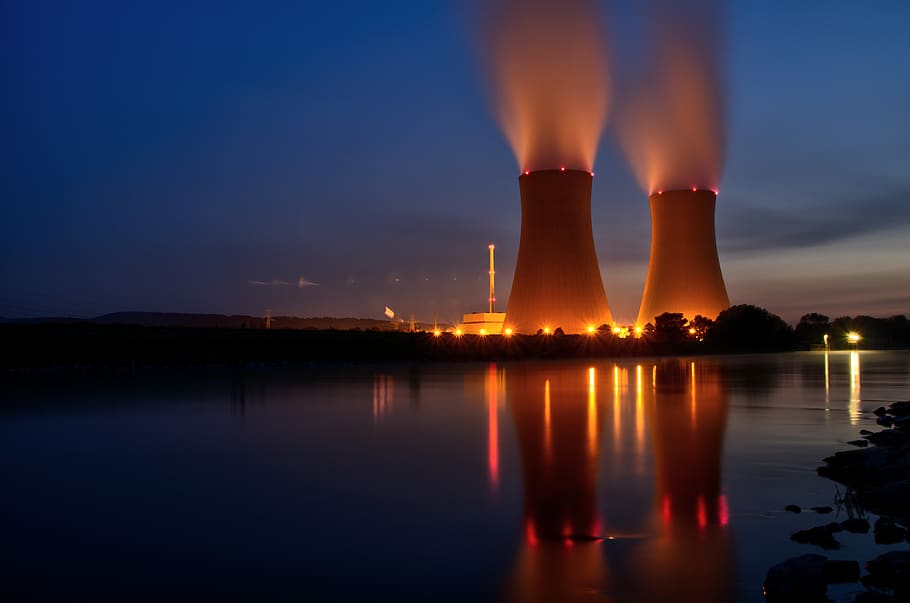Generation nuclear
Contents |
[edit] Introduction
ICE’s insights paper examines the benefits and challenges of delivering new nuclear power in the UK. This short blog explores some of the key themes covered in the paper.
[edit] A nuclear future?
Hinkley Point C is the first UK new build nuclear reactor for several decades. This third-generation plant could provide the blueprint for others to follow, but can this low-carbon solution deliver at scale in a cost-effective way?
Rising demand, the electrification of our transport and heat networks and increasing digitisation could mean that keeping the lights on becomes more challenging than ever before.
This comes as the nation is taking steps to alter how we generate electricity for a net-zero emissions future. In the coming decades, the UK’s energy mix will move away from dependable, yet polluting, oil, coal and gas. In fact, the country is going months at a time without burning any coal at all.
Renewables have somewhat stepped into the breach and now provide around 40% of electricity generation. However, generating power using renewable technologies is not without its challenges, and the UK is perhaps neglecting the potential nuclear presents as an alternative low-carbon source of electricity.
[edit] Nuclear as part of a diverse energy mix
Nuclear, like traditional power plants, provides power by heating water into steam which drives turbines. This source of power is reliable and carbon free, meaning it can contribute to the de-carbonisation of electricity generation without the downside intermittency of solar and wind technologies that are currently susceptible to the changing weather.
There have, however, always been cost concerns with nuclear and many projects have gone over budget around the world. Only a handful of third generation plants have been completed.
While there is hope that a programme of repeatable plant designs and reforms to financing could bring costs down, the advice from the National Infrastructure Commission has been to only agree to one more nuclear project before 2025.
[edit] Building new capacity
This advice stands in contrast to past government ambitions when plans were drawn up to build up to eight new nuclear plants before 2025. Only one, Hinkley Point C, is likely to be completed by this time.
The Government has recently consulted on adopting a form of the Regulated Asset Base model for the nuclear sector, which will change how the sector is financed. This is a potentially important step given that up to two thirds of the cost of a new power plant can be taken up in financing the project.
In the longer term, small modular reactors which could be built more easily, using manufacturing and off-site construction techniques, could supplement major nuclear sites, promising lower cost, more flexible and more rapidly deployable power generation.
[edit] New horizons
Some polls suggest only a third of UK adults have a favourable view of nuclear, and many younger people neither understand the technology or the benefits it can provide. Yet it is necessary for the UK to have a diverse energy mix.
While renewables are promising, they are not always on. It will be some time before the grid can adapt to build up storage capacity or run using mainly intermittent supply. Hence, if the nuclear sector can improve its cost effectiveness, it will be an integral part of meeting our future power needs and reaching net-zero.
The full paper is available to download from this link: Civil engineering insights into nuclear new build in the UK.
This article originally appeared on 9 July 2020 under the title, 'Generation nuclear? Civil engineering insights into nuclear new build in the UK', on ICE's Infrastructure Blog. It was written by Ben Goodwin, Lead Policy Manager.
--The Institution of Civil Engineers
[edit] Related articles on Designing Buildings
Featured articles and news
Government consultations for the summer of 2025
A year of Labour, past and present consultations on the environment, the built environment, training and tax.
CMA competitiveness probe of major housing developers
100 million affordable housing contributions committed with further consultation published.
Homes England supports Greencore Homes
42 new build affordable sustainable homes in Oxfordshire.
Zero carbon social housing: unlocking brownfield potential
Seven ZEDpod strategies for brownfield housing success.
CIOB report; a blueprint for SDGs and the built environment
Pairing the Sustainable Development Goals with projects.
Types, tests, standards and fires relating to external cladding
Brief descriptions with an extensive list of fires for review.
Latest Build UK Building Safety Regime explainer published
Key elements in one short, now updated document.
UKGBC launch the UK Climate Resilience Roadmap
First guidance of its kind on direct climate impacts for the built environment and how it can adapt.
CLC Health, Safety and Wellbeing Strategy 2025
Launched by the Minister for Industry to look at fatalities on site, improving mental health and other issues.
One of the most impressive Victorian architects. Book review.
Common Assessment Standard now with building safety
New CAS update now includes mandatory building safety questions.
RTPI leader to become new CIOB Chief Executive Officer
Dr Victoria Hills MRTPI, FICE to take over after Caroline Gumble’s departure.
Social and affordable housing, a long term plan for delivery
The “Delivering a Decade of Renewal for Social and Affordable Housing” strategy sets out future path.
A change to adoptive architecture
Effects of global weather warming on architectural detailing, material choice and human interaction.
The proposed publicly owned and backed subsidiary of Homes England, to facilitate new homes.
How big is the problem and what can we do to mitigate the effects?
Overheating guidance and tools for building designers
A number of cool guides to help with the heat.
The UK's Modern Industrial Strategy: A 10 year plan
Previous consultation criticism, current key elements and general support with some persisting reservations.
Building Safety Regulator reforms
New roles, new staff and a new fast track service pave the way for a single construction regulator.


























